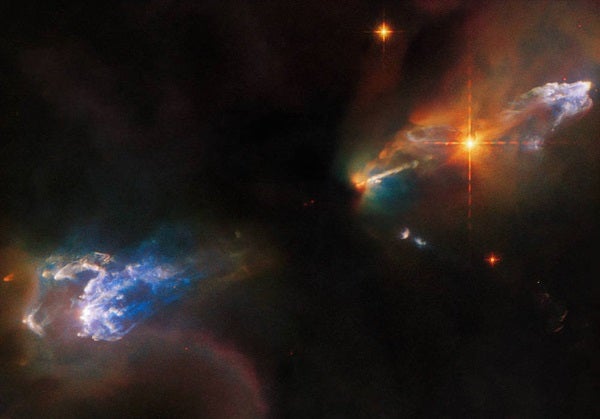The Hubble Space Telescope recently captured this stunning shot of two glowing dust clouds that reside some 1,250 light-years away in the constellation Orion the Hunter.
HH1 (top right) and HH2 (bottom left) are both Herbig–Haro objects, which are patches of nebulosity associated with budding young stars. These objects form when newborn stars shoot out powerful jets of gas that punch through dense clouds of surrounding dust at incredibly high speeds. Parts of HH1, for instance, previously have been clocked traveling nearly 900,000 miles per hour (1.4 million km/h)!
The young star system responsible for creating HH1 and HH2 is hiding in the middle of this image, largely veiled by a dense shroud of dust. (The visible star to the right actually resides in an unrelated region of space.)
Hubble was able to capture these two colorful clumps using its Wide Field Camera 3 instrument and 11 filters spanning infrared, ultraviolet, and visible wavelengths, according to a NASA news release.
The image was obtained to inform two separate studies: One documenting the structure and movement of Herbig-Haro objects; and another that delves into the outflows from such stars. Researchers hope to eventually bolster the data captured in this Hubble image with data from the James Webb Space Telescope.










